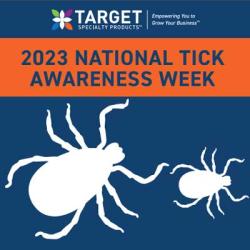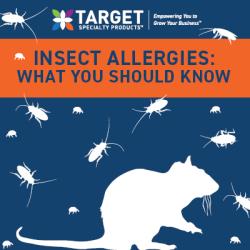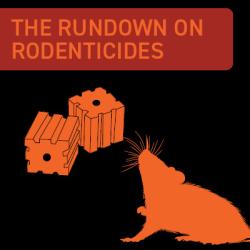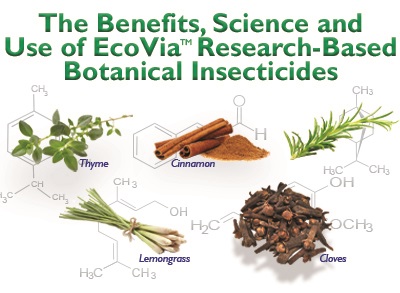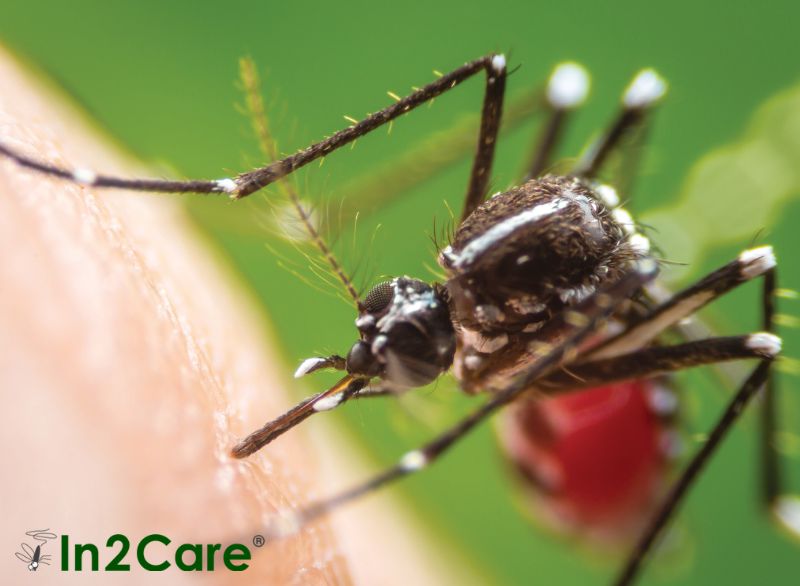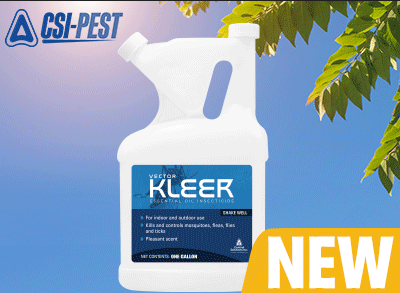Your Guide for TARGETing Termites

As a pest management provider, you know firsthand how termites can eat away at structures before the damage is ever visible, resulting in failing support beams, floor boards, stair railings, etc. And yet, despite warnings from trusted pest management providers such as yourself, home and business owners will still take risks when it comes to protecting one of their largest investments from termites.
Educating your customers is one of the greatest solutions you can provide them, which is why continuing your education on the biology and best control for these pests is vital for adequate control. The best treatment for termites is proactive prevention. Use the information in this blog to help educate your customers on the dangers termites can pose to their most valuable assets – their homes.
In recognition of Termite Awareness Week, we’ve compiled a list of increasing termite risks to be aware of in the United States, and how this may impact your customers.
The rising risk of climate change
Scientists suggest that regions across the country are being affected by climate change. This can be a difficult topic to raise with customers, but using a "facts they can see" approach may be the most fruitful.
- A warming planet. According to the U.S. National Oceanic and Atmospheric Administration (NOAA), the surface temperature on earth has risen about 2°F over the last 150 years. In fact, 10 of the warmest years in recorded history have occurred since 2010. 2022 was in line with this pattern – it was the sixth-warmest year on record. (NOAA, 2023). Scientists are concerned about what may happen to insect populations as the planet warms; it's likely that some beneficial insects may become extinct, while it may allow more invasive, harmful species to spread into new areas, bringing with them crop and property damage, new disease, and other concerns. In fact, when it comes to termites, this is already happening in some areas.
- Shorter winters. It's likely your clients have seen and felt changes in the climate. But explaining to them what that means from a scientific perspective for pests may help them see the risks. As winters become shorter, they allow for an earlier spring and extended fall, increasing the amount of time that foraging termites can remain active during the year and in your customers area.
- Increased severe weather. It's not your imagination – there are more severe weather events like hurricanes and severe thunderstorms happening in North America than just a decade ago. And not only are there more storms, they are becoming more severe. As our climate temperature rises, rainfall and storm surge from these storms becomes more intense because the warmer air can hold more moisture, as this article from NASA explains. (NASA, 2023). So what does this mean for termites? It's likely that as more areas become impacted by climate change, the conditions that are conducive to termite activity are likely to increase. This may be especially true for your customers in and around coastal areas.
More invasive species
All of this climate change is leading to invasive pest species increasing their geographic range around the world – and termites are no exception. A 2017 paper published by researchers at Purdue University and the University of Lausanne in Switzerland reports that the number of invasive termite species recognized globally has increased from 17 in 1969 to 28 in 2017. This paper also cites evidence that invasive species have the potential to cross-populate to create undocumented hybrid termite species with the ability to spread and cause destruction. (Buczkowski & Bertelsmeier, 2017)
"… warming environments resulting from climate change are not only affecting invasive termite distribution, but also contributing to hybridization among invasive termite species." (Buczkowski & Bertelsmeier, 2017)
New termite threats
Conehead termite (Nasutitermes corniger)
South Florida
Introduced to the U.S. in 2001, Conehead termites are an invasive species native to the Caribbean and now actively moving into new areas in Florida. What makes this termite species especially unique is that it doesn’t require the protection of soil or mud tubes. Instead, it forages on the ground, like an ant – a behavior that allows them to travel and spread quickly and unhindered.
Asian termite (Coptotermes gestroi)
South Florida
The Asian termite, a species of subterranean termite, was first found in the United States in 1996 in Miami, Florida. In the years following, colonies were found in the Florida Keys and in Broward, Dade, and Palm Beach counties.
This species swarms in the evening in large numbers, and can be attracted to lights both inside and out. When swarms converge on outdoor and indoor lighting, video screens, or other light sources, they can surprise and alarm people.
Asian termites, like their Formosan termite cousins, are extremely voracious and can quickly infest and destroy a structure. While its spread has been slower than other termite species, it does continue to move into new areas each year. It prefers tropical environments, and is well established in the Caribbean. In Florida, infestations have been found in structures, boats, and ornamental trees. It may be further spread by being introduced to ports on boats, as alates spread out via flight from infested arrivals.
The 4 most prevalent structure-destroying termites in the U.S.
As a licensed termite professional, you are familiar with the four most prevalent types of structurally significant termites, however, the threats from these long-time adversaries are continuing to increase in many areas as a result of the changing environment..
The map below illustrates what types of termites are problematic and the current level of pressure faced in different geographic regions of the United States.

Subterranean termite - (Reticulitermes spp)
Western, Eastern, Central, and Southern U.S. states
Subterranean termites are the most widely spread species of termite in North America due to their ability to adapt to varying climates. They are also the most likely to be a problem for home and business owners.
While widespread, there are many areas of the U.S. that have not traditionally had extensive termite issues due to temperature. However, as temperatures warm and winters shorten, it's likely that these areas of the country will face increased issues with termites. This includes the upper Central and Western U.S., in states such as Montana, the Dakotas, and Minnesota.
Subterranean termites mainly live underground, invading structures from beneath or near the foundation. When foraging for food above ground, they will construct mud tubes for protection. Subterranean termite colonies are quite large and can contain between 60,000 and two million workers. Starting as early as March and continuing through June, you can expect to see reproductive swarmers. In Florida, swarms can occur in late winter and vary by several weeks depending on temperature and species.
Formosan termite (Coptotermes formosanus)
Southeast and Gulf Coast U.S. states
Formosan termites are considered to be one of the most aggressive and destructive structural species. Because of their voracious appetites, they can eat through wooden structures quickly, causing significant damage in a short amount of time.
A species of subterranean termites, Formosan termites build nests underground in soil and rely on moisture to survive. However, if an area provides substantial moisture above ground, they may construct a secondary nest inside the walls of a structure called a carton nest. Formosan colonies are quite large with an average of 350,000 workers, and over 70,000 swarmers. This species of termite thrives in high-humidity states and areas with high moisture levels such as Alabama, California, Florida, Georgia, Hawaii, Louisiana, North Carolina, South Carolina, Tennessee, Texas, and Virginia.
With increasingly severe storms, rising sea levels, and a warming planet, the Formosan termite is likely to expand its reach. In fact, the previously cited paper by researchers at Purdue University and the University of Lausanne estimates that by 2050, under various climate models, "C. formosanus is expected to increase by 15%–20% ... Consequently, their expansion is likely to be associated with new economic impacts and possibly novel encroachments into previously unoccupied areas, including undisturbed, native habitats." (Buczkowski & Bertelsmeier, 2017).
Pest management professionals working or residing in areas that border geographic regions where Formosan termites are now active, should be aware of this species and be able to identify the signs of an infestation.
Drywood termite (Incisitermes minor)
California coastal areas, Southeast and Gulf Coast U.S. states
Unlike subterranean termites and Formosan termites, drywood termites do not live in soil, nor do they require much moisture. Drywood termites live entirely within the wood they infest – hard, dry wood used for roofs, floors, walls, structural supports in attics, furniture, etc. When it’s time for swarmers to leave the colony, the reproductive pair will likely stay close to home, selecting an area nearby to start a new colony. Drywood termite colonies on average have 2,500 members, a much smaller number than subterranean and Formosan colonies. Because there is no wood to soil contact required, preventing drywood termite infestations can be very difficult. Oftentimes visible signs of an infestation are only detected after the infestation has occurred.
Proactive tips for keeping termites away
Helping your customers decrease their risk of a termite infestation is oftentimes a team effort which may require some coaching when it comes to prevention. Here are 5 tips to share with your residential and commercial customers.
- Eliminate moisture - Termites are attracted to moisture. Fix leaky air conditioning units, sprinkler systems, faucets, pipes, and poor drainage to eliminate conditions that are conducive for termite colonies.
- Use pressure-treated wood - Termites are attracted to soft/decaying wood. When building new structures, consider using pressure-treated wood to help prevent termite infestations. Although it’s not completely insect-proof, it doesn’t decay as quickly as untreated wood.
- Maintain exterior trees - Termites are attracted to trees. Fruit, palm, deciduous, conifer, and live or dead trees – they all are at risk of termite infestations. Keeping trees in your yard healthy, as well as removing and discarding dead limbs and fronds will help deter termite activity.
- Seal exterior cracks and gaps - Termites are attracted to entry points that will lead them to the interior of your home or business. Using a water-proof sealer on settling cracks, fascia gaps, gaps around utility lines and pipes, and other visible areas can slow infestations.
- Remove access to wood and cellulose - Termites are attracted to more than structures. Landscaping mulch, tree stumps, wood piles… these can all house termite colonies, giving them easy access to nearby structures. Eliminating wood to soil contact can also help prevent termites.

5 termites signs to look for
- Swarmers - Dependent on species, these flying termites can swarm throughout the day; some species may swarm around lights in late afternoon or early evening.
- Discarded wings - Reproductive termites shed, or cast, their wings once they’ve found a mate and are ready to start a new colony. Wings are often found near doors and windows.
- Hollow or blistering wood - Any changes in the sound of wood when knocked or stepped on, or visible blister-like protrusions, may indicate the presence of termite tunnels.
- Termite droppings - Frass, fecal pellets, droppings… these are all terms used to describe what termites leave behind as they hollow out wood. To the untrained eye, it may appear like small piles of saw-dust or dirt.
- Mud tubes/tunnels - Subterranean and Formosan termites will create mud tunnels leading from the soil to the structure or wooden element that they are feeding on. These can often be seen on foundations, sills, joists, and the exterior of structures/buildings.
Explaining additional risks to your commercial customers
The obvious risks of a termite infestation is that they can cause significant structural damage and costly repairs. But termite activity can also result in the following risks for businesses:
- Safety concerns: termite damage can weaken wood, and if anyone is hurt as a result, liability and legal action can come into play.
- Revenue loss: reduced occupancy rates in multifamily, senior living, offices/property management.
- Business disruption: may require closure for treatment.
- Unwanted publicity: employee/tenant complaints or having to tent the business for treatment.
Target’s termite solutions
Get ahead of termite infestations. Check out our complete line of liquid termite treatments or contact our sales representatives for more information on products that are available.
Sources:
- "A Force of Nature: Hurricanes in a Changing Climate." National Aeronautic and Space Administration (NASA), June 1, 2022. Accessed on March 7, 2023.
- Bertelsmeier, Cleo and Buczkowski, Grzegorz. "Invasive termites in a changing climate: a global perspective." National Institutes of Health (NIH), National Library of Medicine, January 15, 2017. Accessed on March 7, 2023.
- "Climate Change: Global Temperature." National Oceanic and Atmospheric Administration (NOAA), Climate.gov, January 18, 2023. Accessed on March 7, 2023.
- "Featured Creatures." University of Florida, Institute of Food and Agriculture Sciences, June 2017. Accessed on March 7, 2023



